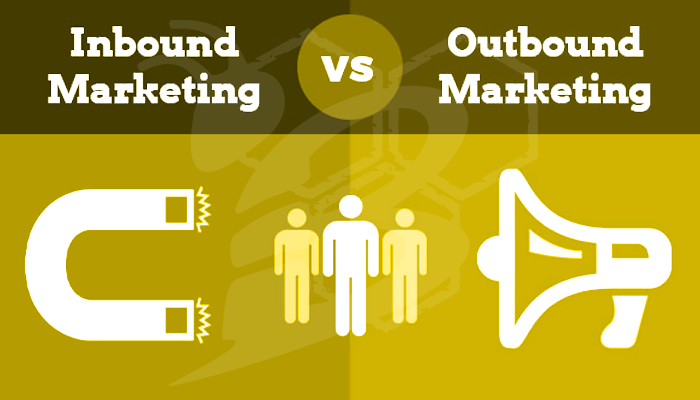You may have heard the terms inbound and outbound in reference to your marketing strategy, but what exactly do those terms mean? And what is the difference between the two? And which should you be using? Let us break it down for you.
Outbound Marketing
Outbound marketing is a strategy in which marketers attempt to reach potential customers through the use of traditional marketing tactics including, but not limited to, television, radio, print and direct mail. These tactics are what some used to refer to as “push” tactics meaning that the marketer is pushing information to the consumer in the hopes that the consumer will take action.
Pros:
- Quick results: You have the ability of reaching a very wide audience fairly quickly. In addition, there is also an opportunity to see ROI more quickly.
- Audience targeting: The ability to target to your specific demographic through purchasing lists or working with media vendors to determine targeting capabilities.
Cons:
- Cost: Since the strategy requires casting a fairly wide net, costs to develop and purchase media are higher.
- Results: Statistics show that traditional mediums are decreasing in use and effectiveness. 86% of people skip TV commercials. 44% of direct mail is never opened. (https://www.cmocouncil.org/
facts-stats-categories.php? )view=all&category=direct- marketing
- Tracking: Tracking ROI is more difficult because of the lack of data available for traditional forms of marketing.
Inbound Marketing
Inbound refers to marketing that focuses on attracting consumers through creating compelling, informative content. It focuses on bringing customers to you rather than you having to go to them. By strategically developing content that is appealing to your core demographic, your goal is to pull customers to seek more information about you. Inbound strategies are made up of digital tactics including SEO, PPC, content creation and social media marketing.
Pros:
- Non-disruptive: Unlike traditional marketing in which the marketer has to seek out the consumer, inbound marketing is non-disruptive to the consumer.
- Ongoing results: Unlike traditional forms of advertising that require you to purchase media for a certain amount of time, content developed using an inbound strategy is something that can potentially exist forever and be parceled out to create additional content.
- Leads: In fact, in 2015, content marketing generated 3 times as many leads as traditional outbound marketing. (http://www.hubspot.com/
marketing-statistics )
- Qualified leads: By bringing customers to you rather than seeking them out, you are ensuring that the people who find you are already qualified leads who are already interested in what you have to offer.
Cons:
- Time: Requires more time than outbound to yield an ROI. In addition, content development is a time-consuming process that requires a dedicated strategy.
- Strategy: Since you’re attracting your audience instead of seeking them out directly, you need to know and understand who they are and what they value in order to create content they will find compelling.
As you can see, there are definite pros and cons for inbound vs outbound marketing and vise versa. Each type has useful tools and strategies to market your business. And there’s not one correct answer to which strategy (or what combination of both) you should be pursuing, but marketing trends are definitely moving in the direction of inbound marketing.




.png?width=100&height=100&name=Why%20Were%20Not%20a%20Marketing%20Agency%20(And%20What%20That%20Means%20for%20Your%20Growth).png)
